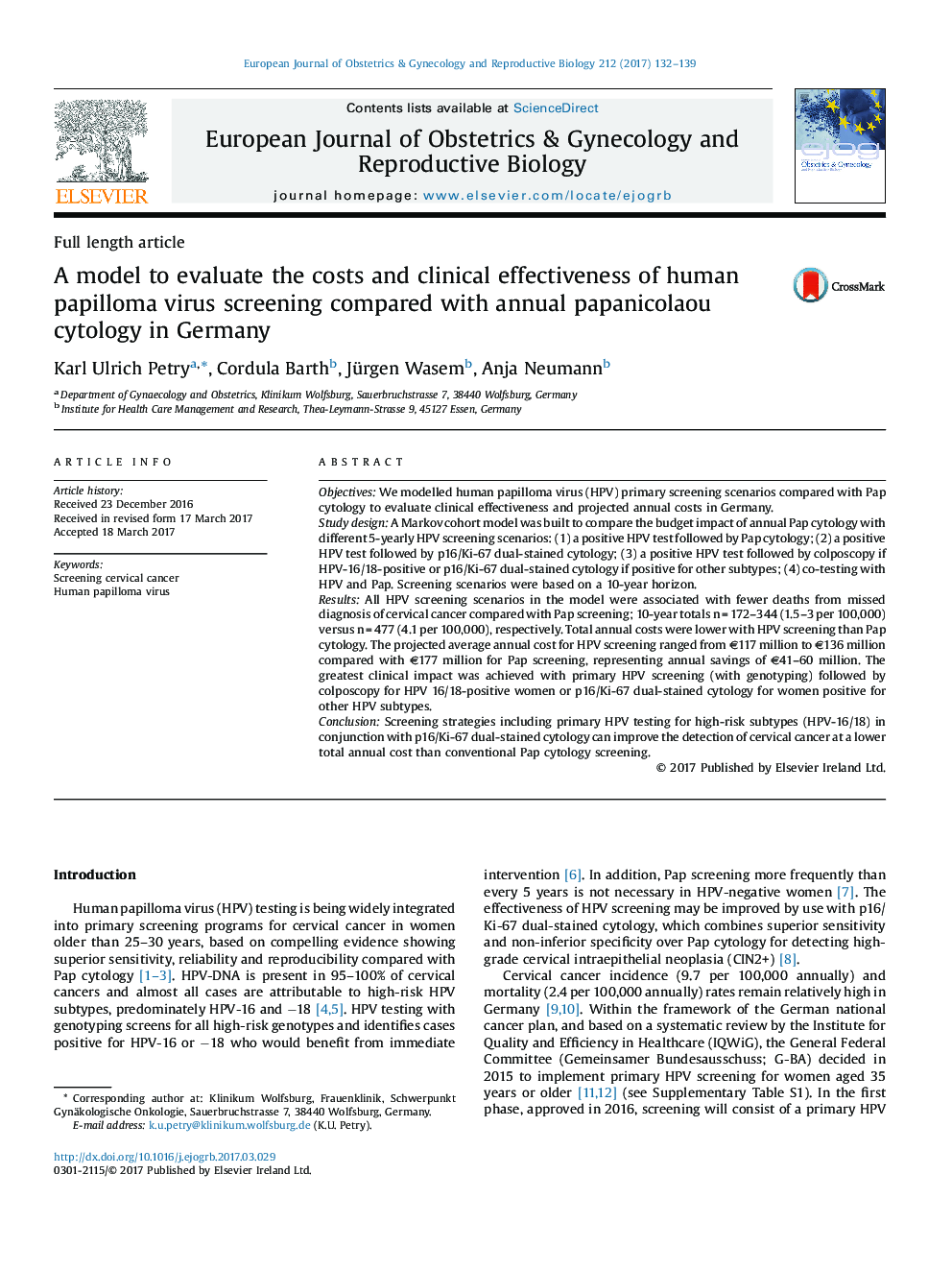| Article ID | Journal | Published Year | Pages | File Type |
|---|---|---|---|---|
| 5692791 | European Journal of Obstetrics & Gynecology and Reproductive Biology | 2017 | 8 Pages |
ObjectivesWe modelled human papilloma virus (HPV) primary screening scenarios compared with Pap cytology to evaluate clinical effectiveness and projected annual costs in Germany.Study designA Markov cohort model was built to compare the budget impact of annual Pap cytology with different 5-yearly HPV screening scenarios: (1) a positive HPV test followed by Pap cytology; (2) a positive HPV test followed by p16/Ki-67 dual-stained cytology; (3) a positive HPV test followed by colposcopy if HPV-16/18-positive or p16/Ki-67 dual-stained cytology if positive for other subtypes; (4) co-testing with HPV and Pap. Screening scenarios were based on a 10-year horizon.ResultsAll HPV screening scenarios in the model were associated with fewer deaths from missed diagnosis of cervical cancer compared with Pap screening; 10-year totals n = 172-344 (1.5-3 per 100,000) versus n = 477 (4.1 per 100,000), respectively. Total annual costs were lower with HPV screening than Pap cytology. The projected average annual cost for HPV screening ranged from â¬117 million to â¬136 million compared with â¬177 million for Pap screening, representing annual savings of â¬41-60 million. The greatest clinical impact was achieved with primary HPV screening (with genotyping) followed by colposcopy for HPV 16/18-positive women or p16/Ki-67 dual-stained cytology for women positive for other HPV subtypes.ConclusionScreening strategies including primary HPV testing for high-risk subtypes (HPV-16/18) in conjunction with p16/Ki-67 dual-stained cytology can improve the detection of cervical cancer at a lower total annual cost than conventional Pap cytology screening.
